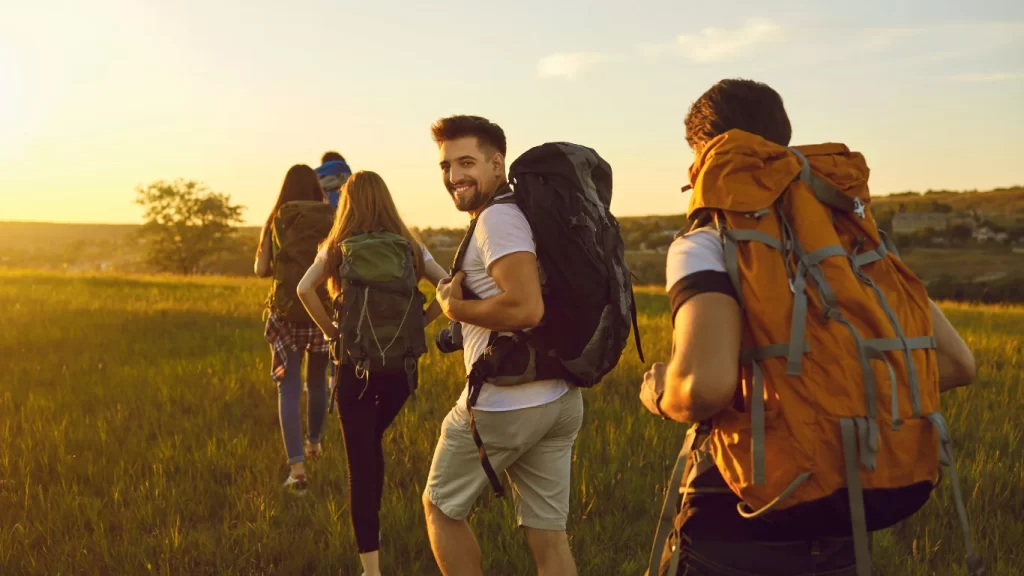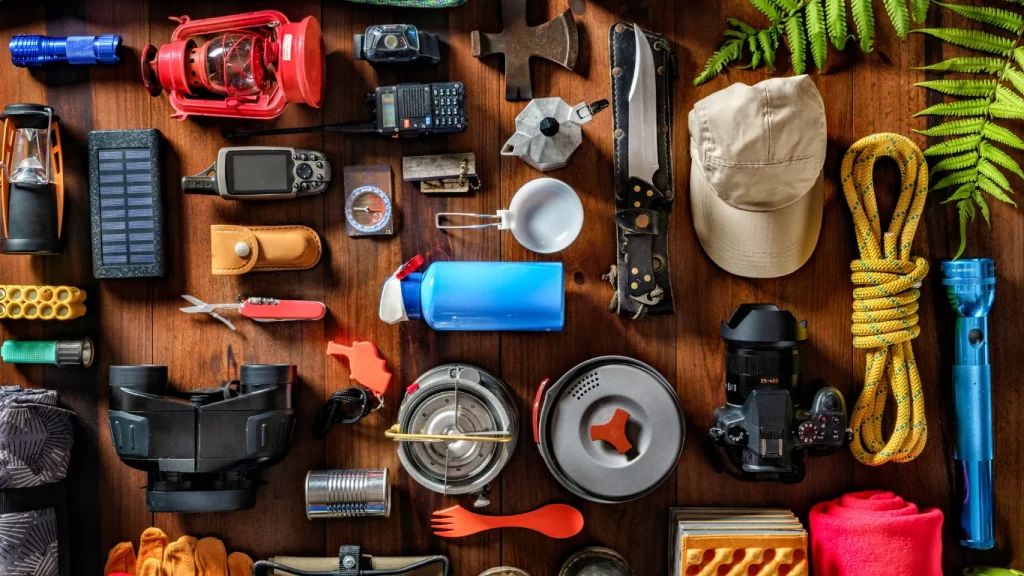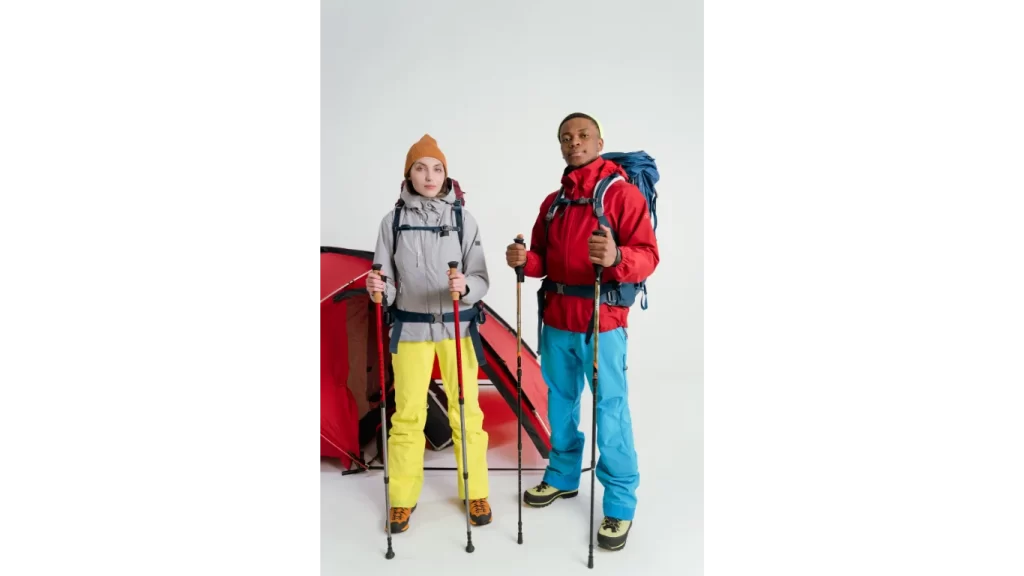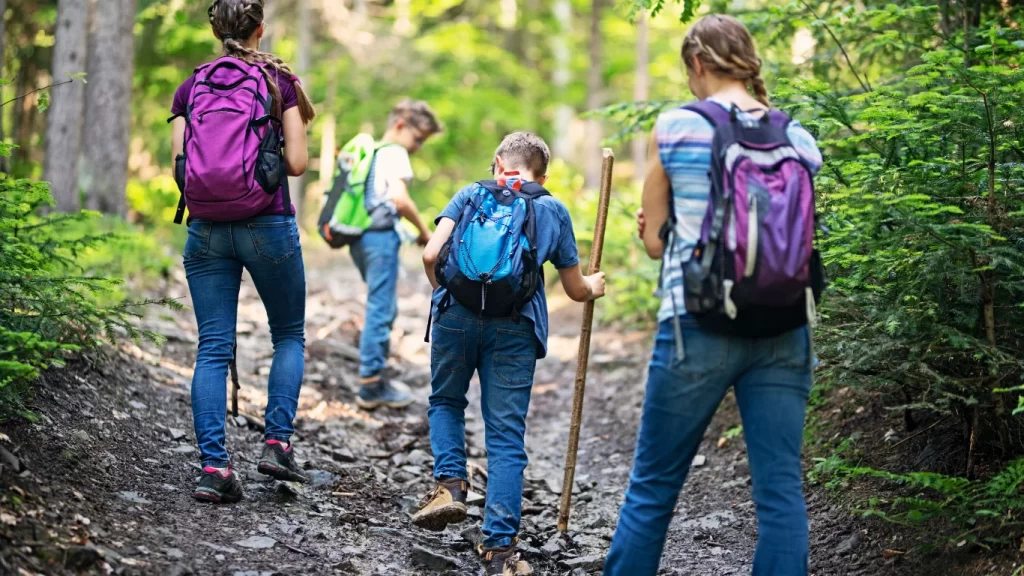Embarking on the scenic trails and embracing the great outdoors is an exhilarating experience for beginner hikers. However, the key to ensuring a safe and enjoyable adventure lies in the proper selection of hiking gear for beginners. Not only does the right equipment enhance the hiking experience, but it also safeguards hikers from the unpredictable elements of nature. This guide focuses on the essential hiking supplies, particularly for those preparing for their first hike. It highlights the significance of adequate preparation and the strategic selection of must-have hiking gear.
In the following sections, readers will gain insights into the essentials of beginner hiking essentials, including the best hiking backpacks, hiking boots for beginners, and practical hiking clothing tips. Furthermore, the article will delve into the hiking equipment list, offering budget-friendly tips for beginner hikers to acquire basic hiking gear without breaking the bank.
Related: Be sure to follow our safety tips on hiking.
Preparing for Your First Hike

Whether it’s ensuring first hike preparation is thorough or exploring a comprehensive hiking gear guide, this article promises to equip novice hikers with the knowledge to confidently tackle their upcoming adventures, making it an indispensable resource for all hikers starting their journey.
Research and Plan Your Hike
Embarking on a hike requires more than enthusiasm; it necessitates thorough planning and research to ensure safety and enjoyment. Start by determining the purpose of your hike, whether it’s a leisurely day trip or a challenging trek. This initial step helps tailor all subsequent preparations effectively.
Research the Trail
Utilize resources such as guidebooks, maps, and online forums to gather detailed information about the trail. Understand the terrain, distance, and expected weather conditions. This knowledge is crucial in planning your route and preparing for the environmental factors you may encounter.
Secure Necessary Permits
Some trails require permits, especially those in protected areas or popular destinations like the Overland Track. Apply for these permits early to secure your desired hiking dates.
Consider Group Size and Experience
The size of your hiking group can impact your experience. A group of four is often recommended for safety reasons, but solo hiking can also be rewarding with adequate preparation. Assess the experience levels of everyone involved and plan the hike accordingly.
Safety and Emergency Plans
Identify potential hazards such as wildlife activity or weather extremes. Prepare a detailed safety plan, including emergency contacts and the steps to follow in case of an accident. Carrying a Personal Locator Beacon (PLB) or just a whistle can be vital in remote areas.
Physical Preparation
Proper physical preparation not only enhances the enjoyment of the hike but also minimizes the risk of injuries.
Assess and Improve Fitness Levels
Evaluate your current fitness level and consider whether it aligns with the hike’s demands. If necessary, undertake a training regimen weeks or months prior, focusing on cardiovascular health and muscle strength.
Practice Hikes
Engage in shorter hikes that mimic the conditions of your planned trip. These practice hikes are essential for conditioning your body and testing your gear. They also help identify any physical limitations or additional training needs.
Strength and Flexibility Training
Incorporate exercises that build strength, flexibility, and balance. Activities like yoga, pilates, or targeted workouts can improve your core strength and also stability, which are crucial for challenging terrains.
Gear and Footwear Testing
Use the same backpack and hiking boots during your training as you will use on the actual hike. This approach helps ensure comfort and functionality, reducing the chances of blisters or discomfort during the hike.
By meticulously planning and preparing for your hike, you set the stage for a safe and memorable adventure. Remember, the key to a successful hike lies in respecting your capabilities and being well-prepared for the challenges you might face on the trail.
Essential Hiking Gear for Beginners

Embarking on a hiking adventure requires enthusiasm and the right gear to ensure safety and also enjoyment. For beginners, understanding what to pack is crucial. This section delves into the essential hiking gear for beginners, focusing on “The 10 Essentials” for safety and survival and providing options for acquiring these items affordably.
The 10 Essentials
The concept of “The 10 Essentials” is a foundational guide in the hiking community, designed to prepare individuals for outdoor activities with safety and preparedness in mind. These essentials are categorized into systems to cover all basic needs from navigation to emergency shelter:
- Navigation: Always carry a map compass, and consider a GPS device. Familiarize yourself with their usage before your hike.
- Sun Protection: Protect yourself from UV rays with sunglasses, sunscreen, and a hat. Consider long-sleeve shirts and long pants for additional protection.
- Insulation: Weather can change rapidly; pack extra clothing appropriate for the worst conditions predicted.
- Illumination: Include a headlamp or a flashlight with extra batteries. Headlamps are preferred for hands-free operation.
- First-Aid Supplies: Carry a first-aid kit tailored to your group’s size and the duration of your hike. Check expiry dates and replenish as necessary.
- Fire: Have matches, a lighter, and fire starters. Ensure they are waterproof, and familiarize yourself with the local fire regulations.
- Repair Kit and Tools: A basic repair kit should include items like duct tape, a knife, and a multi-tool.
- Nutrition: Pack extra food beyond your immediate needs. High-energy, no-cook items like nuts and energy bars are recommended.
- Hydration: Carry sufficient water and have the means to treat water through filters or purification tablets.
- Emergency Shelter: Pack a lightweight tent, bivy sack, or emergency space blanket to protect against the elements.
Affordable Gear Options
Equipping yourself with the 10 Essentials doesn’t have to break the bank. Beginners can find budget-friendly options that don’t compromise on quality or safety:
- Headlamps and Flashlights: Affordable gear, such as the GearLight LED Head Lamp, can be found online or in stores, often with batteries included.
- Sun Protection: Generic brands of sunscreen and essential sun hats protect a fraction of the cost of specialized outdoor brands.
- First Aid Kits: To save money, assemble your own first aid supplies in a waterproof bag. Include essentials like bandages, antiseptic wipes, and allergy medications.
- Multi-Tools: Inexpensive multi-tools, including knives, screwdrivers, and other handy tools for quick repairs, are available.
- Fire Starters: Simple items like cotton balls dipped in wax or dryer lint can be effective fire starters. Store them in waterproof containers.
- Navigation Tools: Learn to use a traditional compass and paper map, which are less expensive than GPS units. Many outdoor stores offer basic models at low costs.
- Clothing and Insulation: Look for sales or secondhand shops for insulated jackets and moisture-wicking layers. Avoid cotton as it retains moisture.
- Water Treatment: Compact water filters and purification tablets are budget-friendly alternatives to expensive systems.
- Emergency Shelters: Emergency bivy sacks or space blankets are compact, lightweight, and inexpensive, making them ideal for unexpected overnight stays.
By choosing wisely and preparing effectively, beginner hikers can enjoy the great outdoors safely and affordably. Remember, the right gear can make a massive difference in your hiking experience, enhancing both your enjoyment and safety on the trail.
Choosing the Right Hiking Attire

When selecting hiking attire, consider a few key factors: protection from the elements, comfort, and the ability to move freely. The right clothing can significantly impact the overall hiking experience, especially when tailored to the specific conditions of different seasons.
Warm-Weather Hiking Attire
For hikes in temperatures ranging from ~60 degrees to 100 degrees Fahrenheit, the goal is to stay cool while also protecting oneself from the sun’s harmful rays.
Shirt: Opt for a long-sleeved sun hoodie or a button-down shirt with UPF protection. These choices are preferable to short sleeves as they provide continuous protection without the need for frequent sunscreen reapplication. Fabrics like a polyester/spandex blend offer comfort and safety by shielding the skin from direct sunlight.
Lightweight Pants or Shorts: Choose garments that are thin, moisture-wicking, and breathable. Lightweight hiking pants are generally more effective than leggings as they provide better breathability.
Accessories: To shield exposed areas, wear a sun-protective hat, thin or blister-prevention socks, and a lightweight neck buff.
Extra Layer: Always carry a lightweight shell jacket. It is invaluable for dealing with the wind at higher elevations or during extended descents and helps maintain comfort after perspiration.
Cold-Weather Hiking Attire
In temperatures between ~20 degrees and 40 degrees Fahrenheit, dressing appropriately is crucial for comfort and safety.
Base Layers: Start with a nice quality base layer that keeps you suitably warm and wicks moisture away from the body. This is essential to stay dry and warm as activity levels change.
Pants: Employ strategies like layering thin base layers or leggings under hiking pants or using thicker base layers alone under shorts to maintain warmth and flexibility.
Softshell Pants: Opt for softshell pants, which are thicker, more durable, and offer better insulation and water resistance. These are ideal for winter hiking and variable weather conditions.
Midlayer: Keep a mid-layer handy in your pack, especially during ascents, to ensure it stays dry. Use it on colder summits or descents to stay warm when less active.
Insulated Layer: An essential component for retaining body heat, especially in stationary moments or colder conditions.
Accessories: Include midweight gloves or mittens, a fleece-lined beanie, a thick wool neck buff, and extra wool socks. Consider shoe gaiters and microspikes for hikes with snow-covered trails.
Shell: Carry a shell as an outer layer to protect against precipitation and wind. It is especially useful when a puffy jacket is too warm.
Choosing the proper hiking attire involves balancing protection, comfort, and adaptability to weather conditions. By selecting appropriate layers and accessories, hikers can ensure they are prepared for various environmental challenges they may encounter on the trail.
Budget-Friendly Tips for Beginner Hikers

Embarking on hiking adventures doesn’t necessarily mean spending a significant amount of money. There are numerous ways to enjoy hiking without stretching your budget. This section provides practical tips on how to save on hiking gear and trail expenses, ensuring that your outdoor experiences remain both enjoyable and affordable.
Buying Used Gear
One of the most effective ways to cut costs is to purchase used gear. Platforms like REI Re/Supply and Patagonia Worn Wear offer an array of secondhand clothing and equipment, providing an affordable alternative to buying new. Additionally, local thrift stores, Facebook Marketplace, and online marketplaces like eBay are excellent sources for finding used hiking boots and clothing at significantly reduced prices. The benefit of buying used gear extends beyond just cost savings; it’s also a more sustainable choice for the environment.
Local consignment shops often feature a variety of lightly used outdoor gear. These shops not only make hiking more accessible by reducing costs but also offer an opportunity to find unique items that might not be available in mainstream stores. Online communities, such as local “Outdoor Gear Exchange” Facebook groups, frequently list used gear for sale or even for free, fostering a community spirit and making hiking gear more accessible.
Saving on Trail Expenses
To further reduce costs, consider the following strategies:
- Pack Your Lunch: Preparing and bringing your own food and snacks can significantly cut down on expenses compared to eating out. A small cooler can be packed with meals and beverages for the day, helping you stay nourished without the added cost.
- Reusable Water Bottles: Investing in a reusable water bottle is not only economical over time but also environmentally friendly, reducing waste from single-use plastics.
- Camping: Instead of booking expensive accommodations like hotels or Airbnbs, camping is a cost-effective alternative. Websites such as Hipcamp and Recreation.gov offer extensive listings of campsites that can be much more affordable, often around $30 per night.
- Membership and Sales: Joining outdoor co-ops like REI can lead to substantial savings through members-only sales and discounts on gear and clothing. Look for annual sales and clearance events, where high-quality gear can be purchased at a fraction of the original price.
By incorporating these budget-friendly tips, beginner hikers can save money while still thoroughly enjoying the great outdoors. Whether it’s through buying used gear or cutting down on trail expenses, these strategies help make hiking an accessible and sustainable activity for everyone.
Conclusion
Embarking on a hiking adventure is something else, especially for beginners, underscores the importance of being well-prepared with the right gear and knowledge. This guide has traversed through essential considerations, from selecting the right hiking gear and attire to adopting budget-friendly strategies, ensuring a comprehensive primer for novice hikers. The emphasis on preparing for different weather conditions, choosing appropriate clothing, and prioritizing safety through “The 10 Essentials,” equips beginners with a foundation to venture into the outdoors confidently. Moreover, the detailed insights into acquiring gear economically further dismantle barriers to entry, making hiking an accessible and enjoyable pursuit for all.
By embracing these principles, the novice hiker not only ensures their own safety and enjoyment but also contributes to the sustainability and preservation of the trails for future enthusiasts. As you prepare for your next adventure, remember that proper preparation and mindset are your most valuable tools, paving the way for countless memorable journeys on the trail.
FAQs
What items should be included in your hiking gear list?
Essential items for your hiking checklist include a hiking pack, weather-appropriate clothing such as moisture-wicking layers, hiking footwear, ample food and water, navigation tools like a map, compass, a first-aid kit, and a knife or multi-tool.
Why is it important to carry the ten essentials while hiking?
The 10 Essentials are crucial for ensuring safety and preparedness during hikes. They provide necessary aid in cases of minor injuries, unexpected weather changes, or unforeseen delays. These essentials represent the basic items every hiker should carry.
How can someone begin hiking as a hobby?
For beginners, it is advisable to start with shorter trails that have a low elevation gain to build confidence and comfort. Gradually progressing to longer and more challenging hikes helps in developing hiking skills while keeping the activity enjoyable and suited to your fitness level.
What should you pack for a three-day hiking trip?
For a multi-day hike, essential personal equipment includes a backpack (40–60 litres), a waterproof or plastic pack liner, a sleeping bag suitable for 3-4 seasons, a comprehensive first aid kit with blister treatment, a map and compass for navigation, and a headtorch or flashlight with spare batteries.





